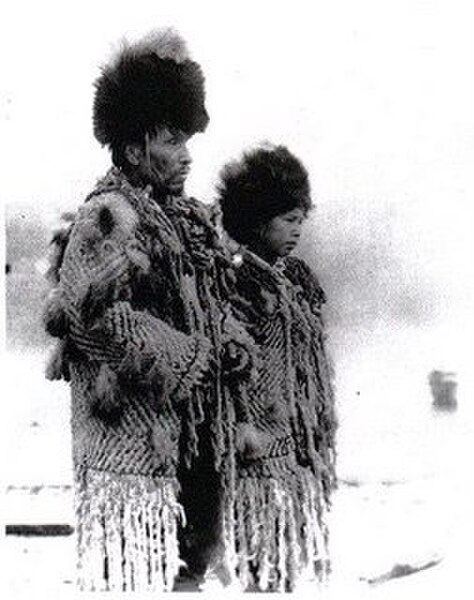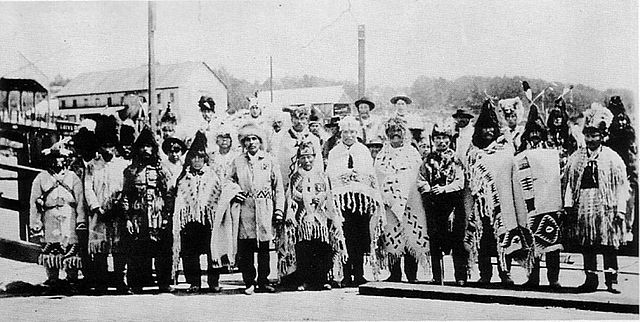Squamish is a Coast Salish language spoken by the Squamish people of the Pacific Northwest. It is spoken in southwestern British Columbia, Canada, centred on their reserve communities in Squamish, North Vancouver, and West Vancouver. An archaic historical rendering of the native Sḵwx̱wú7mesh is Sko-ko-mish but this should not be confused with the name of the Skokomish people of Washington state. Squamish is most closely related to the Sechelt, Halkomelem, and Nooksack languages.
Bilingual road sign in Squamish and English languages, on Highway 99
The Squamish people are an indigenous people of the Pacific Northwest Coast. Archaeological evidence shows they have lived in the area for more than a thousand years. In 2012, there was population of 3,893 band members registered with the Squamish Nation. Their language is the Squamish language or Sḵwx̱wú7mesh snichim, considered a part of the Coast Salish languages, and is categorized as nearly extinct with just 10 fluent speakers as of 2010. The traditional territory is in the area now in southwestern British Columbia, Canada, and covers Point Grey as the southern border. From here, it continues northward to Roberts Creek on the Sunshine Coast, up the Howe Sound. The northern part includes the Squamish, Cheakamus, Elaho and Mamquam rivers. Up the Cheakamus River it includes land past Whistler, British Columbia. The southern and eastern part of their territory includes Indian Arm, along Burrard Inlet, through False Creek then English Bay and Point Grey. Today the Squamish people live mostly in seven communities, located in West Vancouver, North Vancouver, and within and nearby to the District of Squamish.

In 1906, Joe Capilano traveled with Cowichan Chief Charley Isipaymilt and Secwepemc Chief Basil David to London to seek an audience with King Edward VII.
Chief Andrew and his son Alvie Andrews in 1902 wearing traditional garb. Photograph taken in village of Sen̓áḵw.
A Delegation of various Salish leaders in Vancouver wearing traditional regalia in 1906
Squamish singers at traditional pole blessing ceremony





